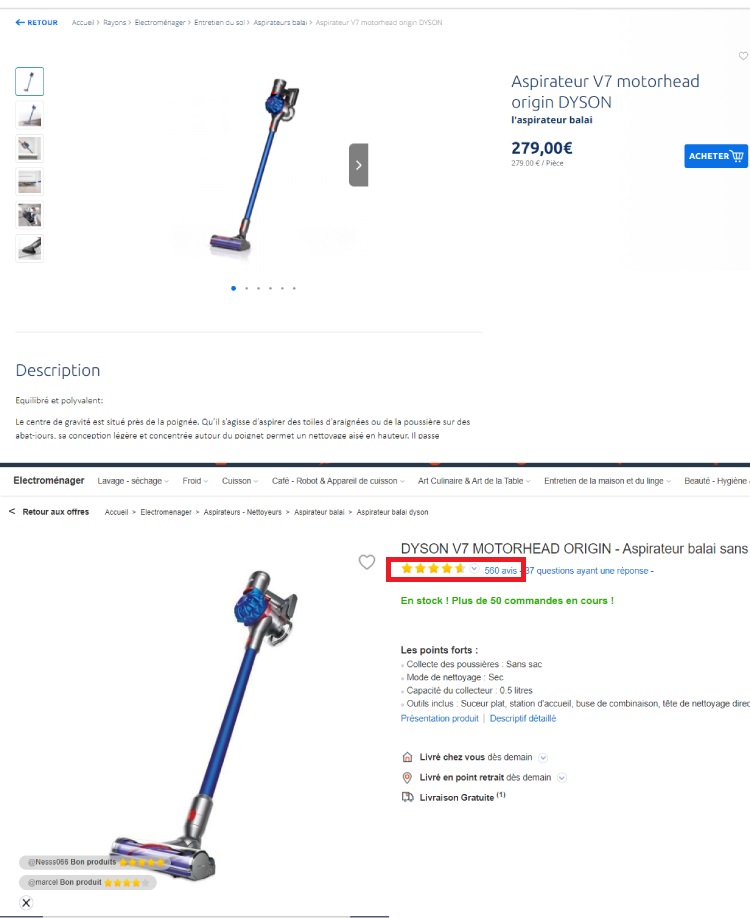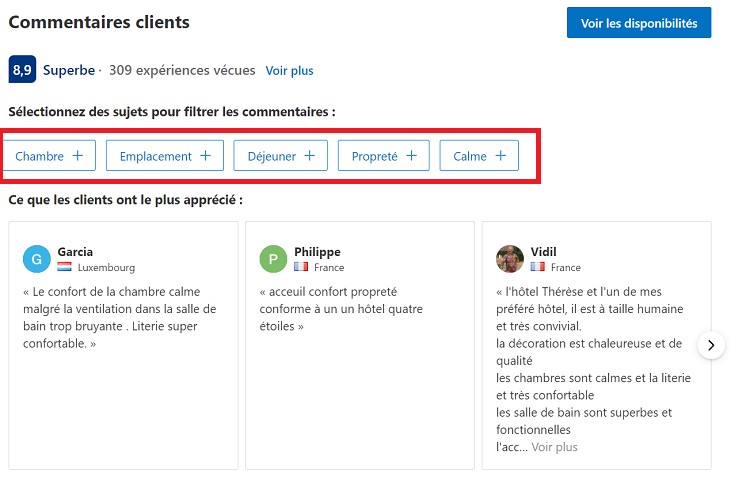On the Internet, customer ratings and reviews are very important for Ecommerce platforms! Your company’s online reputation is at stake, and these ratings help customers to quickly form an opinion about your products or service. Positive reviews or a good rating increase trust, and therefore the likelihood that web users will move on to the purchasing act, and turn into customers. To boost customer satisfaction and sales, here are 3 tips for a 5-star website.
1. Get as many reviews as possible on an ecommerce site
96% of Internet users are influenced by a company’sreputation before making an online purchase. According to a study by BazaarVoice, the conversion rate increases by 30% with 50 or more reviews, and can rise to over 44% with 200 reviews.
So, to translate your customers’ satisfaction with your products, the number of reviews counts.
If your visitors come to a product page with little or no customer feedback, how can they be sure that the product is of high quality, and that the consumers who bought it are satisfied?
If your merchant platform doesn’t offer this information, users will certainly search for customer reviews on social networks, or worse, on competing platforms.
Example of product pages for the same item, with and without reviews.
At the same selling price, which one would you order?
So, on your product pages and at the time of purchase, and even afterwards, encourage your customers to leave a rating or review ! The more reviews there are about your products, the more confidence potential buyers will feel.
More than a technology, use your rating system as a real tool to enrich your content, support your marketing strategy, and boost your sales by accompanying your customers throughout their purchasing journey.
2. Facilitate access to customer reviews
Even if your users have identified their needs and the product they want to buy, perhaps they don’t have precise knowledge of the product itself, or don’t know on what criteria to make the right choice. They certainly need help!
For example, how do you choose a vacuum cleaner, or what criteria should you use to select a piece of clothing or sports equipment that you’d like to give as a gift but won’t be wearing yourself?
Research can be really tedious, so make it easy for consumers to access reviews and ratings! Indeed, as we’ve seen, this is an important influencing factor for your potential customers. The easier it is for them to consult reviews, the more reassured and confident they’ll feel.
Here’s an example to follow: some travel booking platforms offer the option of filtering reviews according to key words, which is very useful for refining your search:
Example of filters on customer reviews of a hotel.
These filters make it easier to assess the quality of a service according to the consumer’s priority criteria.
3. Increase the number of customer reviews and boost page speed
In most cases, customer reviews are delivered by Third Parties, or third-party services, rather than by the website itself. The third-party service hosts the customer reviews and displays them on the user’s browser.
This is very practical, but it can have an impact on the quality of the user experience in terms of loading speed.
Why is this? Because the browser needs to generate requests to the third-party service provider’s server to load and display customer reviews. If these requests are blocked because the third-party solution’s server doesn’t respond, or doesn’t respond fast enough, then the reviews will take a long time to display, and may not display at all.
Unfortunately, this can have a negative impact on the user experience, as overall page loading can be slowed down, interactivity lessened, and your users may get the impression that your website isn’t working properly.
This is obviously a risk for your sales when you consider that loading speed is a key UX requirement, and that more than half of visitors leave a page if it takes more than 3 seconds to load (Google study). From this you can deduce that your customers won’t wait any longer to read reviews.
Also, remember that for Amazon, 100 ms longer to load = 1% less sales. So you need to be prepared for all eventualities to limit the impact of Third Parties on your loading speed, even the most useful ones for your marketing.
As we are well aware of the importance of Third Parties for Ecommerce platforms, that they add value to your website, but that they can also multiply by 3 or 4 the access time to a functionality, here are a few tips for good management of these third-party services, and preserving the speed of your web pages:
- list your Third Parties ;
- prioritize them;
- disable those that are not useful for your platform;
- reserve the right to deactivate those that malfunction or prevent your pages from being used;
- optimize your loading speed to seamlessly manage the additional weight of Third Parties, and keep your pages fast for all your users in all circumstances (whatever the device and browsing conditions).
If you’re interested in this subject, you’ll find more methodological advice and best practices in our study dedicated to Third Parties.
Take full advantage of the benefits of customer reviews for your ecommerce platform
We’ve seen that customer reviews boost your sales and conversion rates, and that they have a strong influence on your platform’s users during the purchasing process. But you need to know how to integrate them so that they don’t degrade the quality of the user experience, which is also a key factor in your conversion rates. Indeed, in retail, 1 extra second of loading time can reduce conversion rates by 20% on mobile (Google study).
So, to take advantage of this value-added functionality while preserving the speed of your pages, you need to optimize your frontend:
- compress images,
- reduce the size and weight of your resources (HTML, JS, CSS…),
- reduce the number and weight of requests between browser and server…
Thanks to our intelligent optimization engine, all these techniques can be automated to save time, and allow technical teams to concentrate on developing new functionalities that will bring ever greater satisfaction to your customers, instead of fighting barehanded with milliseconds in excess.
Are you interested in web performance, and would like to know more
about optimization techniques for your Ecommerce platform?
Subscribe to our monthly newsletter:























